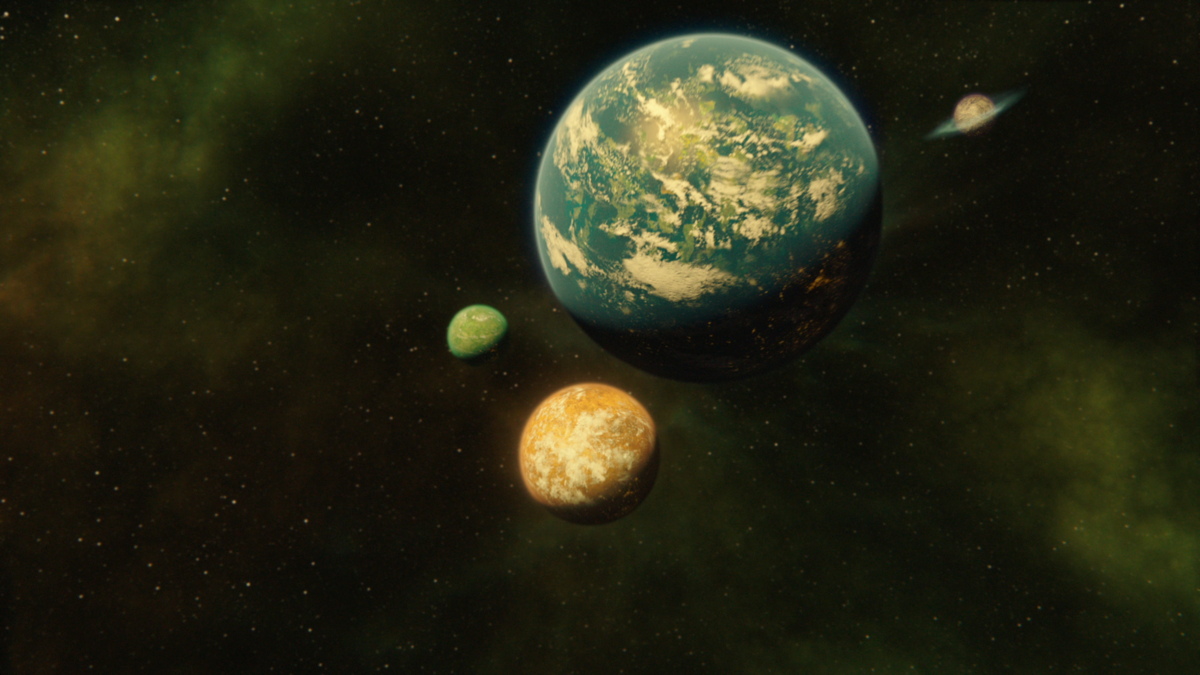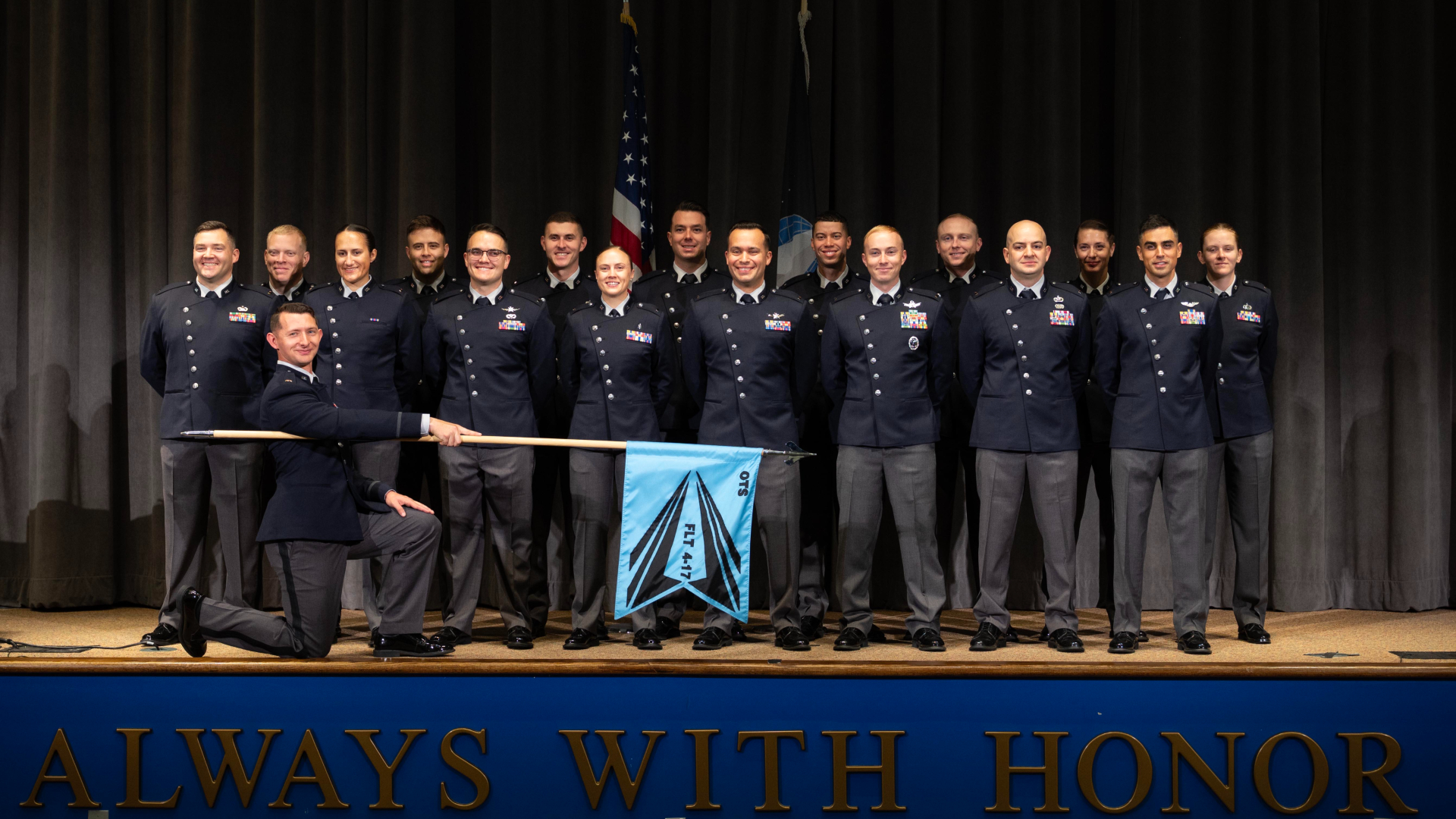SyFy Channel's 'Killjoys' Creator Talks Sci-Fi and Special Effects

Spaceships, bounty hunters, political turmoil and mysterious organizations are some of the many layers that Michelle Lovretta, creator of the new Syfy series "Killjoys," has added to the show.
On a planetary system known as "The Quad," which includes one planet and its three moons, Dutch (played by Hannah John-Kamen) and John (Aaron Ashmore) work for a company called the Recovery and Apprehension Coalition or RAC. The company employs bounty hunters, or "killjoys," to hunt down wanted criminals throughout the Quad. But Dutch and John's lives are thrown into chaos when a warrant appears for John's brother, D'Avin (Luke Macfarlane).
"Killjoys" debuts tonight on Syfy at 9 p.m. ET/10 p.m. CT. It is one of three science fiction shows the Syfy network is debuting this year. [Photos from Syfy's 'Killjoys': Space Bounty Hunting Adventure]
Lovretta has written for many shows that fall under the "speculative fiction" category (a genre that tends to encompass anything that has supernatural, fantasy or science fiction elements). Her writing credits include the shows "Lost Girl," "Relic Hunter" and "Rogue."
Lovretta talked with Space.com about creating a science fiction TV show, the classic and unique science fiction aspects of "Killjoys," and what it's like to see a world come to life with the power of visual effects.
Space.com: Where did the idea for "Killjoys" come from?
Michelle Lovretta: I think, to a degree, almost all shows start the same way, which is with a mentally restless, slightly bored writer, who is, kind of very much like every audience member, just looking for something that we want to see on screen. But we have the privilege of being able to say, "Well, s---, if it's not there, I can just go out and see if I'm lucky enough to write it and sell it." And that's a huge process obviously, but that's how it starts.
Breaking space news, the latest updates on rocket launches, skywatching events and more!
I had just done so much fantasy, so I didn't want to [write] anything to do with vampires or succubi or anything anymore. And I just really had a hunger for space. I selfishly just really love the idea of being on spaceships with some cool tech. And the different thing that I was looking for that I wasn't guaranteed I'd be able to find — and why I sort of created the show — was I wanted something that had a bit more of a light touch. A lot of times, when you get more into the science fiction end of [speculative fiction], I find that it can get a little serious and a little grim. And I have enjoyed watching those shows. But just for some reason, when I'm writing, my heart can't go there. I always need something that's very character-based and has a sense of joy and adventure to it. So, I mean, bounty hunters in space pretty much goes perfectly with that concept and what I was looking for.
Space.com: So, "Killjoys" takes place in space, but it's different from some space-based shows like "Star Trek," where the characters go to a new location in almost every episode. "Killjoys" seems a little more limited geographically, but I guess that gives you the opportunity for repeat characters as well as repeat locations.
Lovretta: Yeah, it's trying to have the best of both worlds. It's trying to have a guarantee of novelty when we choose it. Because obviously, on every moon and every planet, there can be multiple cultures and multiple cities, and we can go to as many as we like. But we also have the capacity of returning very easily in our stories to some of the ones that are working better.
Space.com: Even if it's more limited in location, the show has no shortage of story layers. There are the relationships between the three killjoys, their own personal baggage, their dealings with the company they work for, the political struggles going on in The Quad, and the whole space thing. That seems like a lot.
Lovretta: Well, it's layered. It's got a lot of stuff. I have to say that my attempts at storytelling are always skewed toward … I want to make sure that it is entertaining and that it is emotionally real. So those are the two pulls that tend to be driving the stories the most.
[The stories] obviously take us through these politically rich and complicated areas. They take us through a fair amount of dealing with the systems of this interconnected planetary unit. So there are those issues. But the true line through all of them is, how does it impact our trio, our killjoys? In what ways does it challenge or change them? So the core thing is always about our three.
And I think what helps in that is, killjoys, by their professional agreements, are not allowed to take sides. So these warrants are basically a mechanism to sort of put [the three leads] in the middle of these situations — which, I guess, [is] kind of like the "Star Trek thing," when they come to a new world, the mechanism where they had to be like, "I can't be involved." We have a little bit of that through this restriction that [the killjoys] have. So it allows [the audience] to sort of experience it through them, through their eyes, but we don't have to get deeply mired in it because then they have to go off to the next warrant. [Our 10 Favorite Sci-Fi Space Stations of All Time]
Space.com: There are clearly some classic science fiction story elements built into the premise of the show — like bounty hunters in space, which has been used before, and is great. Is there anything new or different from classic sci-fi that viewers can expect in "Killjoys"?
Lovretta: I think that we try to have a bit of a retro sensibility to ourselves and to have fun with some of those old tropes. I think that having Dutch as the lead is a bit of a departure from, classically, where those stories began. And I think that for me, what's important in the trio — which is a little bit different from what often happens in gendered trios — is Dutch and her partner, Johnny, are entirely platonic. And it's something that I'm hopeful that we will keep. Although, they have wonderful chemistry. I think that that's important for me, because it is something that I don't often see: [that] the two [are] very compatible, very attractive sort of brother-sister-by-choice partners.
Space.com: The visualizations of space and the Quad and the spaceship and all that stuff look really beautiful. I'm curious if you got to see those while you were writing the show or if it all came later. And what's it like to see your imagination made into a world like that?
Lovretta: I have to say, I very much enjoy the job that I have. I've always enjoyed all the different parts. Being able to work on a series where I can say, "Make me a spaceship," and then we all work together and refine designs — and then you physically walk on it — is a blast. But the biggest blast of all is when you are finally able to get that footage from the VFX [visual effects] house, and they're delivering things and you're cutting it in.
Up until then, it's actors against a green screen; it's writers writing with their imagination. You're hoping you're going to like the final result, but you're basically just writing, "Insert ship," or descriptions of a fight, or things of that nature. And so, when you are finally able to see them, it kind of blows your mind a little bit. It's terrifying! We ended up with a wonderful VFX house that did a really fabulous job, but [before you see the effects], it's just sort of pushing forward with best intentions and a great deal of hope.
And so, that final product — when we're able to see it and we get everything the way we want — it's as close as you can get, I think, to being able to experience it just as an audience member. Because you haven't seen this stuff for the past 12 cuts, and you get a little bit sort of jaded through all that [pre-effects] stage, and nothing seems new or novel. And then suddenly, you see this one cut with the effects in, and you get to see it fresh. That's a joy, and it's something I've never experienced to this degree.
Follow Calla Cofield @callacofield. Follow us @Spacedotcom, Facebook and Google+. Original article on Space.com.

Calla Cofield joined Space.com's crew in October 2014. She enjoys writing about black holes, exploding stars, ripples in space-time, science in comic books, and all the mysteries of the cosmos. Prior to joining Space.com Calla worked as a freelance writer, with her work appearing in APS News, Symmetry magazine, Scientific American, Nature News, Physics World, and others. From 2010 to 2014 she was a producer for The Physics Central Podcast. Previously, Calla worked at the American Museum of Natural History in New York City (hands down the best office building ever) and SLAC National Accelerator Laboratory in California. Calla studied physics at the University of Massachusetts, Amherst and is originally from Sandy, Utah. In 2018, Calla left Space.com to join NASA's Jet Propulsion Laboratory media team where she oversees astronomy, physics, exoplanets and the Cold Atom Lab mission. She has been underground at three of the largest particle accelerators in the world and would really like to know what the heck dark matter is. Contact Calla via: E-Mail – Twitter


